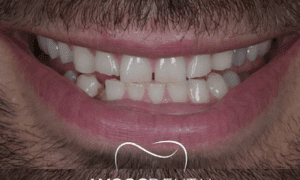Technology has revolutionized pest control, offering smart sensors, heat-mapping tools, and AI-driven detection systems to combat infestations. Yet, bed bugs remain one of the most elusive pests, capable of hiding in the smallest cracks and crevices. With the rise of smart detection devices, many wonder: can bed bugs outsmart technology?
While smart devices improve bed bug detection, they are not foolproof. Bed bugs are incredibly adaptable, often evading digital sensors and requiring additional methods such as bed bug sniffing dogs for precise detection. Let’s dive into whether these pests can truly hide from smart devices and what solutions provide the best results.
1. Smart Devices Improve Detection, But They Have Limitations
Smart technology has revolutionized bed bug detection, offering an advanced, non-invasive way to monitor and identify potential infestations. Devices equipped with heat sensors, motion tracking, and AI-powered analysis can detect even subtle signs of bed bug activity.
These tools work by identifying temperature variations, movement patterns, and microscopic fecal traces, helping property owners catch infestations in their earliest stages. Smart cameras with night vision can also track bed bug movements, as these pests are most active in the dark.
However, these devices have limitations. Bed bugs are masters of hiding in areas that technology may not reach, such as inside electrical outlets, deep within upholstery, or behind walls. Since they can survive without feeding for months, their ability to remain dormant further reduces detection accuracy. This makes smart devices a useful tool, but not a complete solution.
2. Bed Bugs Can Adapt to Detection Methods
One of the reasons bed bugs are so difficult to eliminate is their ability to adapt. Over the years, they’ve developed resistance to pesticides, altered their behavior to avoid detection, and found new hiding spots beyond traditional problem areas like beds and sofas.
Many smart detection systems rely on movement or heat signatures to identify bed bugs, but these pests can remain motionless for long periods, making it harder for sensors to pick them up. Furthermore, in well-lit or frequently disturbed environments, bed bugs often retreat to deeper, more concealed areas, where technology struggles to reach.
3. Bed Bug Sniffing Dogs Offer a More Reliable Detection Method
Despite the advancements in smart pest control technology, bed bug sniffer dogs remain one of the most accurate tools for bug detection. According to Merlin Environmental, these highly trained canines can detect even a single bed bug with their powerful sense of smell, locating infestations far more effectively than digital sensors.
Unlike smart devices that rely on temperature or motion tracking, bed bug sniffing dogs use scent detection, making them effective even in hard-to-reach areas such as inside walls, behind furniture, and deep within carpets. This allows for more precise and faster identification of bed bug activity, reducing the time and effort needed for treatment.
4. Smart Devices May Be a Good First Line of Defense, But They Require Human Intervention
While smart devices provide an early warning system, they still require human verification. Many detection systems may produce false positives due to environmental factors such as dust, heat fluctuations, or movement from other small insects. This means that trained professionals are still needed to confirm an actual bed bug infestation.
The best approach is to use smart technology in combination with expert inspections and bed bug sniffing dogs. Canine detection offers accuracy that digital tools alone cannot match, while smart devices help monitor areas continuously. Together, they form a comprehensive strategy for effective bed bug detection and elimination.
5. Combining Technology with Traditional Methods Yields the Best Results
Rather than relying solely on smart devices or traditional inspections, the most effective way to combat bed bugs is a hybrid approach that leverages the strengths of both. While smart detection technology provides real-time monitoring and early warnings, bed bug sniffer dogs bring unmatched accuracy in pinpointing live infestations.
This combination creates a proactive and highly effective defense against bed bug outbreaks, particularly in high-risk environments such as luxury hotels, upscale apartments, office buildings, and retail spaces.
Luxury hotels, residential properties, and commercial establishments benefit most from a multi-layered approach. By integrating bed bug sniffing dogs with smart detection tools, businesses and homeowners can prevent infestations from spreading, reducing treatment costs and ensuring peace of mind.
The Smartest Approach: Using All Available Tools for Bed Bug Detection
Bed bugs are expert hiders, capable of avoiding some smart detection methods. While technology provides valuable insight, it is not infallible. The most effective approach to bed bug detection is a combination of smart sensors, professional inspections, and bed bug sniffing dogs.
By leveraging all available tools, businesses and homeowners can stay ahead of bed bug infestations, ensuring fast and accurate detection. No single method is perfect, but together, they create a robust defense against one of the most persistent pests in the world.





























